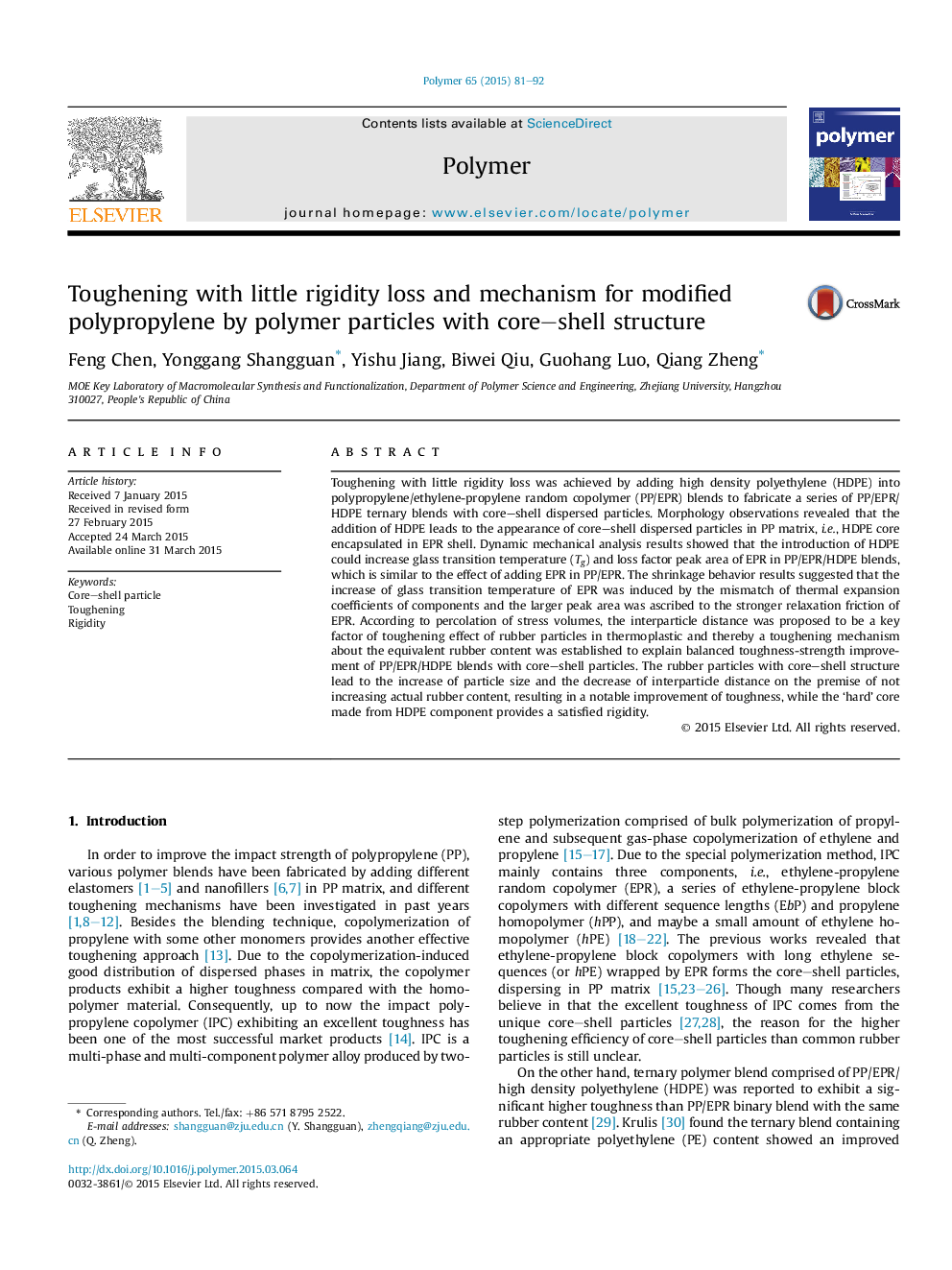| Article ID | Journal | Published Year | Pages | File Type |
|---|---|---|---|---|
| 5180345 | Polymer | 2015 | 12 Pages |
â¢PP/EPR/HDPE blends present a balanced toughness and rigidity improvement.â¢The interparticle distance takes a key factor of toughening by rubber.â¢A new toughening mechanism of increasing equivalent rubber content was proposed.
Toughening with little rigidity loss was achieved by adding high density polyethylene (HDPE) into polypropylene/ethylene-propylene random copolymer (PP/EPR) blends to fabricate a series of PP/EPR/HDPE ternary blends with core-shell dispersed particles. Morphology observations revealed that the addition of HDPE leads to the appearance of core-shell dispersed particles in PP matrix, i.e., HDPE core encapsulated in EPR shell. Dynamic mechanical analysis results showed that the introduction of HDPE could increase glass transition temperature (Tg) and loss factor peak area of EPR in PP/EPR/HDPE blends, which is similar to the effect of adding EPR in PP/EPR. The shrinkage behavior results suggested that the increase of glass transition temperature of EPR was induced by the mismatch of thermal expansion coefficients of components and the larger peak area was ascribed to the stronger relaxation friction of EPR. According to percolation of stress volumes, the interparticle distance was proposed to be a key factor of toughening effect of rubber particles in thermoplastic and thereby a toughening mechanism about the equivalent rubber content was established to explain balanced toughness-strength improvement of PP/EPR/HDPE blends with core-shell particles. The rubber particles with core-shell structure lead to the increase of particle size and the decrease of interparticle distance on the premise of not increasing actual rubber content, resulting in a notable improvement of toughness, while the 'hard' core made from HDPE component provides a satisfied rigidity.
Graphical abstractDownload full-size image
